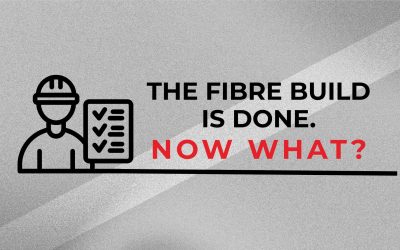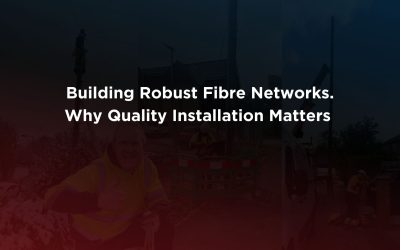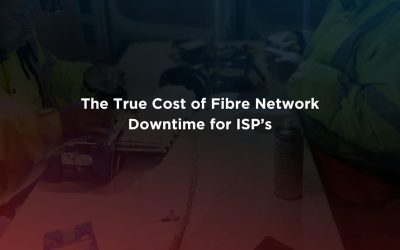In the world of cloud adoption and remote operations, a new hero has emerged. It’s sleek, fast, and indispensable- yes, we’re talking about fibre optics.
While the spotlight is often on software, cloud computing, and data analytics that make our digital lives easier, the true power behind these innovations is something far more humble and unassuming: fibre-optic broadband. Without this powerful infrastructure, the dream of a digital transformation in the UK would be like trying to stream Netflix in the middle of a thunderstorm without an umbrella.
Let’s take a moment to give fibre optics the accolades it rightfully deserves. For its pivotal role in enabling cloud adoption, powering remote operations, and helping Internet Service Providers (ISPs) overcome the obstacles that stand in the way of the UK’s digital revolution.
The Cloud Optimal Performance
The clouds are reaching incredible heights, providing services faster and smoother than ever before. But what’s the secret to this cloud’s impressiveness? Fibre optics, of course. Without it, the cloud would be nothing but a foggy concept, trying to lift off with the weight of outdated copper cables dragging it down.
For UK-based ISPs, the need for fibre infrastructure is non-negotiable. As businesses shift to cloud-first strategies and employees across the nation embrace remote working, fibre ensures these transitions happen without a hitch. Just imagine trying to upload a high-resolution video to the cloud over a sluggish ADSL line- what a disaster that would be! Fibre makes sure that these digital transitions happen seamlessly, quickly, and without those all-too-familiar buffering icons.
Remote Operations: Fibre’s Gift to the Working World
When the pandemic hit, the world were forced to adapt in ways no one anticipated. The shift from office spaces to home offices created a surge in demand for reliable, high-speed internet. As businesses scrambled to find solutions, fibre optics stood proudly as a silent contributor to enable remote operations.
In the UK, remote working would have been a logistical disaster without fibre. The benefits are clear: faster video conferencing, uninterrupted VoIP calls, and the ability to collaborate on cloud-based applications with minimal lag. For employees in rural areas or smaller towns, fibre opens possibilities they never imagined. The workplace no longer needs to be tied to a physical location, and fibre makes sure it all happens smoothly.
Overcoming Challenges: The Battle of ISPs in the Digital Age
Now, let’s shift focus to the brave warriors battling in the trenches: the Internet Service Providers (ISPs) of the UK. As the demand for faster, more reliable internet connectivity increases, ISPs find themselves on the frontlines of digital transformation. Their mission? To expand fibre infrastructure to every corner of the country, no matter how remote, no matter the cost.
But there are hurdles. Let’s break them down:
- The Cost of Fibre
Expanding fibre networks is not a cheap endeavour. ISPs need to make substantial investments in laying down the infrastructure and maintaining it. The capital expenditures are sky-high, but in a rapidly transforming digital world, every fibre cable laid is an investment. For the UK to truly dominate in digital transformation, ISPs must overcome the challenges of financing and infrastructure development to ensure that fibre reaches every home, every business, and every street. - The Gigabit Broadband
The UK has set ambitious goals for gigabit broadband. The government’s £5 billion Gigabit Programme aims to deliver gigabit-capable broadband to every corner of the country by 2030. It’s an ambitious project, but fibre is the key to making this a reality. ISPs need to roll out high-speed fibre networks, ensuring that even the most rural communities can enjoy gigabit speeds. The promise of digital equality is within reach, and fibre is the ticket. - The “Last Mile” Problem
Delivering fibre to homes is one thing. But the “last mile” is the final stretch of the network connecting homes and businesses to the fibre-optic infrastructure. Many UK communities are scattered across rural areas or located in dense urban centres where existing infrastructure is already a patchwork of cables. For ISPs, connecting these last-mile customers while minimising disruption is a logistical challenge, but it’s one that Fibre is increasingly overcoming through innovative approaches like Fibre to the Premises (FTTP).
The Road Ahead
As ISPs navigate the challenges of delivering fibre to the masses, the UK stands on the brink of digital rebirth. For the UK to remain competitive on the global stage, the government, ISPs, and businesses must continue to prioritise fibre infrastructure.
At VEA Telecoms we offer premium fibre network design, installation, and proactive maintenance, ensuring cutting-edge, future-ready connectivity. From expanding or starting fresh, our expert team guarantees a robust, long-lasting fibre infrastructure. Explore our services.








